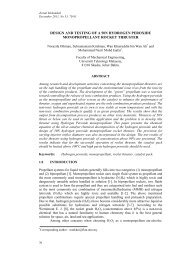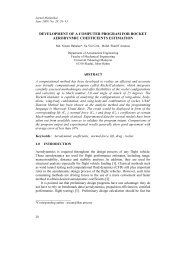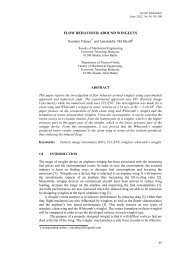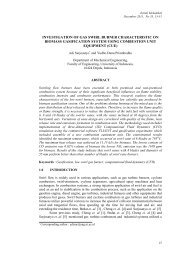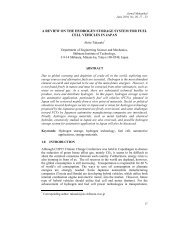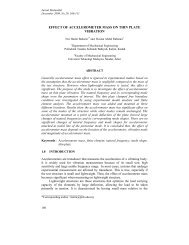structural performance analysis of formula sae car - Jurnal Mekanikal
structural performance analysis of formula sae car - Jurnal Mekanikal
structural performance analysis of formula sae car - Jurnal Mekanikal
Create successful ePaper yourself
Turn your PDF publications into a flip-book with our unique Google optimized e-Paper software.
Figure 4: Horizontal Lozenging [3]<br />
<strong>Jurnal</strong> <strong>Mekanikal</strong>, December 2010<br />
It is generally thought that if torsional and vertical bending stiffness is<br />
satisfactory, then the chassis structure is expected to perform well. But torsional stiffness<br />
is given more weight-age as the total cornering traction is the function <strong>of</strong> lateral weight<br />
transfers [2].<br />
3.0 LOAD ESTIMATION<br />
After literature review, it was brought in view that normally FSAE <strong>car</strong> parts are designed<br />
to withstand 3.5 g bump, 1.5 g braking and 1.5 g lateral forces [4]. These loads have to be<br />
considered individually and combined. Determination <strong>of</strong> magnitudes, types and center <strong>of</strong><br />
gravity (cg) <strong>of</strong> loads is obligatory for optimum frame structure which is likewise a<br />
repetitive task. An understanding <strong>of</strong> different loads in respective directions is shown in<br />
Figure 5 in reference to Formula <strong>car</strong>s.<br />
Figure 5: Forces acting on a <strong>formula</strong> one <strong>car</strong> [7]<br />
To estimate an individual and total load <strong>of</strong> various components and <strong>car</strong> as a<br />
whole, a block diagram showing estimated position <strong>of</strong> components was created as shown<br />
in Figure 6. This schematic diagram simplified the understanding <strong>of</strong> different loads and<br />
their respective positions.<br />
49



